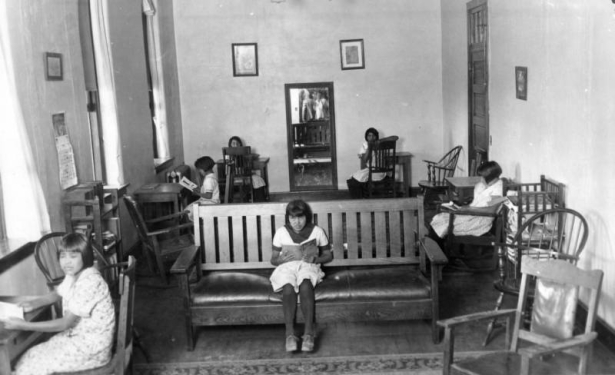In June 2021, newspapers began to report on the rediscovery of mass graves at First Nations boarding school sites across Canada. This sparked a global flurry of interest in the history of Indigenous boarding schools in North America, as nations and individuals confronted a genocidal history that was both long known and yet long unaddressed.
On June 22, 2021, United States Secretary of the Interior Deb Haaland directed her department to conduct an investigation of U.S. sites. The resulting Federal Indian Boarding School Initiative Investigative Report identified 408 Federally-supported schools opened in the United States between 1801 and 1969.
This environment inspired our graduate essay contest winner, Travis J. Jimenez, to delve deeper into the history of Native American boarding schools in Colorado in his essay, “Identifying Colorado Indian Boarding Schools After the Discovery of the Unmarked Graves of Canada’s Indian Residential Schools.”
Jimenez used photographs from the DPL Digital Collections to bring life and imagination to the experiences of Native American youths in Colorado. The photographs in our digital collections act as both evidence and lenses through which to view the residential school facilities that were developed to contain and destroy Indigenous cultures.
Five boarding schools are typically identified as having been located in Colorado, though recent research is considering as many as 10 relevant institutions. The most commonly discussed are Fort Lewis Indian Boarding School located near the modern Fort Lewis College campus and Teller Indian School in Grand Junction. Rounding out the five were the Southern Ute Boarding School (Ignacio), the Good Shepherd Industrial School (Denver), and the Ute Mountain Boarding School (Towaoc).
In May 2022, Colorado created its own research program via HOUSE BILL 22-1327. It tasked History Colorado, the state’s historical society,
“to research and make recommendations to promote Coloradans' understanding of the physical and emotional abuse and deaths that occurred at federal Indian boarding schools in Colorado, including the victimization of families of youth forced to attend the boarding schools and the intergenerational impacts of the abuse.”
Preliminary results have been released as part of two reports by History Colorado: September and December 2022.
Interested in learning more about Native American boarding schools in Colorado and beyond? Take a look at our archival collections!


Comments
Please realize that the term
Please realize that the term "Native American" has no meaning in Canada! We use "Indigenous", which covers First Nations (your "Indians"), Métis and Inuit,
"Native" is outdated, and often considered derogatory, unless used by the peoples themselves.
Thank you for your comment,
Thank you for your comment, Katherine. I appreciate the discussion of terminology for First Nations in Canada. The use of Native Americans in this blog post is in accordance with preferred terms in the United States (where we are located). I have changed the terms used when speaking of Canadian schools, but when speaking of those in the United States we will use our preferred terms. For more information, I recommend this quick guide from the Smithsonian Institution: https://americanindian.si.edu/nk360/informational/impact-words-tips
Add new comment